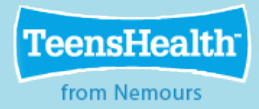TTAN Resources, Indicator 13: Transition
Tips for navigating this page.
Our resource section is now organized by the 4 Indicators: Graduation, Drop Out, Transition and Post School Outcomes.
Each indicator has a list of categories at the top of the page. When the category is selected, the category will expand into a list of resources.
To filter resources for a specific audience, click one of the grey tabs labeled teacher, student, family, agency, or administrators. To change the filter to a different audience simply click on one of the other grey tabs.
Categories
Individualized Education Program
Transition Planning
Summary of Performance
Student Participation in IEP Meeting
Age Appropriate Transition Assessments
Goals
Preference, Interest, Needs and Strengths
Course of Study
Agency Participants
Post Secondary Goals
Transition Services
Individualized Education Program
IEP (Individualized Education Programs)You asked to have your child evaluated for special education services. Now it’s time for the IEP meeting, but you’re not sure what to expect. What’s in an IEP? How can you prepare for the meeting? |
|
Understanding the Transition IEP Process
|
|
Keeping Special Education Records
|
|
Oregon Standard IEP Form
|
|
Oregon Administrative Rules for Special Education (OARs)
|
|
Instructing Students With High-Incidence Disabilities in the General Education Classroom
|
|
Supports, Modifications, and Accommodations for Students
|
|
Individuals with Disabilities Education Act (IDEA)
Welcome to the U.S. Department of Education’s Individuals with Disabilities Education Act (IDEA) website, which brings together IDEA information and resources from the Department and our grantees. |
|
Common Core Standards/Academic Content Standards
|
|
Administrator's Resources on ODE
|
|
IDEA Statute and Regulations
|
|
Federal Policy -- IDEA Policy
|
|
Oregon Policies and Procedures for Special Education
|
|
The Sturge-Weber Foundation
We exist to improve the quality of life and care for people with Sturge-Weber syndrome and associated Port Wine Birthmark conditions. We support them with collaborative education and advocacy in tandem with translational research as we promote effective management and awareness. |
|
Assistive Technology: What it is and How it works15 nonprofit organizations have joined forces to support parents of the
one in five children with learning and attention issues throughout their
journey. With the right support, parents can help children unlock
their strengths and reach their full potential. With state-of-the-art
technology, personalized resources, free daily access to experts, a
secure online community, practical tips and more, Understood aims to be
that support. |
|
Assistive Technology for Kids with Learning Disabilities: An overviewAn assessment decision making TOOL to help IEP teams in determining whether a student should take the Oregon Extended Assessment. |
|
Accessibility and Accommodations for English Language Learners and Students with DisabilitiesAssessments help teachers and parents know if students are on the path to success. The Smarter Balanced assessment system provides accurate measures of achievement and growth while challenging students to think critically and solve real-world problems. A core principle of the Smarter Balanced system is accessibility for students who take the test. |
|
Assistive Technology Tools & Resources for Students with Disabilities
|
|
Special Education Parent Support
|
|
Traumatic Brain Injury (TBI) informationThe Center on Brain Injury Research and Training offers comprehensive, web-based training for classroom teachers, 1. Discover how brain injury differs from other disabilities, 2. Create a classroom that supports student success, 3. Learn simple, practical strategies to use in your classroom. |
|
Children's Behavioral Health ServicesWe are improving behavioral health services to Oregon’s children by: 1.Championing effective and efficient statewide behavioral health services, 2. Supporting safety for Oregon's children, young adults and their families, 3. Incorporating System of Care principles, 4. Developing science- and trauma-informed approaches |
|
Case Example for Alex: Disability, AutismA case study that shows completed Age Appropriate Transition Assessment, Post Secondary goals, Transition Services, Annual Goals, etc. |
|
Case Example for Allison: Specific Learning DisabilityA case study that shows completed Age Appropriate Transition Assessment, Post Secondary goals, Transition Services, Annual Goals, etc. |
|
Case Example for Rolanda: Profound Cognitive DisabilityA case study that shows completed Age Appropriate Transition Assessment, Post Secondary goals, Transition Services, Annual Goals, etc. |
|
IEP Discussion Starters_3 TemplatesThree templates for IEP discussion starters: education and training, employment, and more intensive supports |
|
Case Example for Susie: DeafBlind Multi Disabled this case example includes information for the IEP, age appropriate assessment, post-secondary goals, transition services, course of study and annual IEP goal |
|
New IEP Transition PageA copy of the page of the transition IEP |
|
Evidence Based Practices that Support the PredictorsThe table illustrates evidence-based practices (EBP) that support implementation of in-school predictors of post-school success. Column 1, Predictor, lists the name of the predictor identified through ongoing reviews of rigorous correlational research. Column 2, Related EBPs, lists examples of evidence-based practices that could be used to support implementation of the predictor |
|
Transition Planning Checklist for IEP TeamsA picture of a transition planning checklist for IEP teams, it also shows suggestions and information |
Transition Planning
What do you want to be when you grow up?
|
|
Youth Hood
|
|
Swindell's Resource Center
|
|
ARC of Oregon
|
|
Oregon Health Plan or Medicaid
|
|
Family to Family Health InformationOregon Family to Family Health Information Center at OHSU: Resources for families of youth aged 13-17: teen recreation and sports, adolescent social-emotional and mental health, learning and education for 13-17, transition to adult health care |
|
Institute of Community Integration (Univ of Minnesota)
We are driven by our mission that all people with disabilities have the opportunity to be participating members of their communities of choice. |
|
Oregon Department of Education: Information on Special Education
|
|
National Parent Center on Transition and Employment (PACER)
|
|
Data Quality Campaign
|
|
Transition Resources - Oregon Department of Education
|
|
Transition Planning for Students with IEPs
|
|
Oregon Youth Transition Program (YTP)The purpose of the YTP is to prepare students with disabilities for employment or career related post-secondary education or training through the provision of a comprehensive array of pre-employment transition services and supports.
|
|
Oregon Commission for the Blind
|
|
Transition PlanningNTACT/Transition Planning: Resources to guide Transition Planning from elementary into post-secondary. Includes guidance documents and frameworks. |
|
NTACT
|
|
College and Career ReadinessReadiness for post secondary education is critical for students’ future success and ability to access career opportunities. American Institutes for Research (AIR) recognizes this challenge and applies its substantial expertise in
building school, district, and state capacity and conducing research and
evaluation studies to offer clients customized strategies that support
college and career readiness efforts. |
|
Transition Coalition at the Unversity of Kansas
|
|
Alternative Assessments
|
|
Secondary Transition for Students with Disabilities
Secondary transition for students with disabilities page includes information about PSO training, transition conference, Transition Path to Adulthood folder, a transition guide and other resources |
|
Transition Documents
The following documents will assist school districts, students, parents, and others in planning for the next step after leaving high school. |
|
IDEA Partnership at NASDSE
|
|
School to Adult Life Transition
Updated, February 2018 This page is designed to connect you with basic information about transition planning. We’ve included articles, guides, and online trainings designed for specific audiences, because we all process and use information from the vantage point of why we want to know and what we’re going to do with the info. |
|
National Association of Special Education Teachers |
|
Council for Exceptional Children (CEC) |
|
E-Ready Special Education Information |
|
Internet Special Education Resources (ISER)
|
|
Association of University Centers on Disabilities (AUCD)
|
|
Disability Disclosure -- update to 411 on Disability disclosureThis document is a supplement to The 411 on Disability Disclosure: A Workbook for Youth with Disabilities , which helps youth learn about disability disclosure and what it means for them. Since that workbook was developed in 2005 there have been many advances in technology that have changed what youth need to know about disability disclosure. |
|
Project Access |
|
Planning for Your Transition From High School to Adult LifeSince 2000, the Rural Institute has focused several of our projects on customized community employment for youth with significant disabilities. We have developed and implemented unique models of transition planning that continue to evolve as we learn more from the youth and families with whom we work. |
|
Skills to Pay the BillsOffice of Disability Employment Policy has listed under Youth in Transition a pdf and a video series titled "Soft Skills to Pay the Bills-- Mastering Soft Skills for Workplace Success |
|
Guardianship and Other Options to Help Another Person Make DecisionsIf a person becomes incapable of making decisions on their own about their medical treatment or everyday life, and their health or safety may be in danger, they may need someone to assist them. There are resources and the booklet Options in Oregon to Help Another Person Make Decisions give an overview of guardianship, conservator and other decision-making arrangements. |
|
CIS Demonstration VideoThe Oregon Career Information System (CIS) provides a system of occupational and educational information to help Oregonians learn about the world of work and education. We work with schools, colleges, social agencies, and businesses who provide career guidance and employee development services. |
|
Justice Department Settlement Regarding ADA
|
|
ChoiceMaker Self-Determination CurriculumThe ChoiceMaker Curriculum is designed to teach students the self-determination skills needed to be successful in adult life. The ChoiceMaker Curriculum consists of three strands: (1) Choosing Goals, (2) Expressing Goals, and (3) Taking Action. Each strand addresses teaching objectives in three transition areas: Education, Employment, and Personal. |
|
Memorandum of Understanding on Transition of Students with Disabilities to the WorkforceOn February 2, 2015, the Memorandum of Understanding on Transition of Students with Disabilities to the Workforce was signed by the Office of Developmental Disabilities, Services Oregon Vocational Rehabilitation Services, Oregon Department of Education, and Oregon Council on Developmental Disabilities The MOU vision is through strong agency collaboration, youth with disabilities will transition into competitive integrated employment or post-secondary education/training. |
|
Oregon Executive Order No. 15-01On February 2, 2015, Oregon’s Executive Order No. 15-01 was signed by Governor Kate Brown. This Order addresses employment services for those who have intellectual or developmental disabilities, as well as services to transition-aged students with disabilities. |
|
Accessing the Dream: Preparing Deaf-Blind Youth for a Self-Determined Life
|
|
eParenteParent provides practical advice, emotional support and educational information for families of children and adults with disabilities and special healthcare needs as well as to the physicians, allied health care professionals, and educational professionals who are involved in their care and development |
|
Special Education AcronymsA
glossary of acronyms commonly used in literature and services concerning special education and transition. |
|
Transition Education Network- Eugene OregonAt TEN, we have the vision that each student who completes our program with have the skills and supports in place to be able to carry out an individualized, functional life plan. |
|
YTP- Best PracticesAs a best practice, YTP Transition Specialist should share YTP client progress notes electronically with their Vocation Rehabilitation Counselor (VRC) partners on a systematic and scheduled basis. Every 2 months would be a good schedule to consider. |
|
National Center on Deaf-Blindness (NCDB)As a national technical assistance center funded by the federal Department of Education, NCDB works to improve the quality of life for children who are deaf-blind and their families |
|
Person-Centered Planning/One Page Profile Resource
|
|
Career Exploration & Skill Development
|
|
Detailed look at the Career Development ProcessFor HIGH SCHOOL STUDENTS: Explore these topics for a more detailed look at the career development process and steps that are important for your high school age child. You will find practical ideas about ways you can support your child’s future. You will discover the possibilities for education and training after high school. And you will be able to get tips, checklists, activities, and other resources. |
|
Disability Rights OregonOur mission is to promote and defend the rights of individuals with disabilities. |
|
Oregon DHS - Person Centered PlanningPerson-Centered activities (planning, tools approaches) assist people to express what is important to them, how they want to be supported, and how they want to live. |
|
Person Centered Planning Education SitePerson-centered planning is a process-oriented approach to empowering
people with disability labels. It focuses on the people and their needs
by putting them in charge of defining the direction for their lives, not
on the systems that may or may not be available to serve them. This
ultimately leads to greater inclusion as valued members of both
community and society. |
|
Creating WorkabilityWe specialize in innovative training and technical assistance to ensure that people with intellectual and developmental disabilities are a vital part of the workforce. |
|
US Department of Education page for ParentsUS department of Education: Parents/My child's special needs webpage has a resources list |
|
Information & Resources for Promoting Self-DeterminationThe Let’s Get to Work Library of Self-Determination Resources will help you explain to teams why self-determination is so important in transition and expanding the scope of ways you teach it. Some of the resources are stand-alone, while others can be used with additional items as indicated within the documents. The library of resources can be found at http://www.letsgettoworkwi.org/index.php/lgtw-project-resources/self-determination-resource-library/ |
|
Language -- Who Hears What?A chart about terms used and what is heard: Communication is understanding the emotion and intentions behind the speaker and the listener. Effective communication can lead to collaboration when the meanings are understood by all of the IEP team members |
|
TerminologyIt is important to be aware of legislation and reform initiatives that are being developed that impact transition for all youth, including students with disabilities. Here is a list of "buzz words" with their definitions |
|
Pre-Employment Transition Services (Pre-ETS)A clear explanation of Pre-Employment Transition Services for students 14-21 prior to qualifying for Vocational Rehabilitation. This document includes the relationship between IDEA and WIOA, what Pre-ETS services look like, and how to request services. |
|
Introducing Case ExamplesCase samples on three students, based on original information posted on the NSTTAC website (now NTAC). Examples include how districts might develop Post-secondary Goals, Transition Services and Course of Student using Oregon requirements and forms. |
|
Eight Components of a Transition IEPThe eight required components of a transition IEP. |
|
Person Centered ThinkingPerson-Centered Thinking and planning, placing the student at the “center” of their own planning activities for the future. Includes examples of student behaviors in the planning process. |
|
Agency Awareness and AttendanceRequirements and guidelines for identifying other agencies (e.g. Vocational Rehabilitation, College-Disability Services, Independent Living Centers) that will be invited to send a representative to the IEP meeting. |
|
Summer Work Internship for TransitionSWIFT, a 7-week residential program at Portland State University, gives youth a taste of the world of work and independent living. This fact sheet lists experiences students may have and eligibility requirements for the program. |
|
IDEA Secondary Transition ServicesIDEA secondary Transition Services : means a coordinated set of activities for a child with a disability that is designed to be within a results-oriented process that is focused on improving the academic and functional achievement of the child with a disability to facilitate the child’s movement from school to post-school activities |
|
Top Tips for Successful TransitionA list of tips for a successful transition process |
|
Individual Planning TermsTerms such as IEP, IPE, ISP, and person-centered planning are listed and defined |
|
Transition Planning ExamplesExamples of transition planning with post-secondary goals, transition services, and course of study filled for three students |
|
Transition Planning Checklist for IEP TeamsA picture of a transition planning checklist for IEP teams, it also shows suggestions and information |
Summary of Performance
CTP Student Summary of Performance Form - SpringfieldDownload: Summary of Performance.doc This Community Transition Program (CTP) form is used by Springfield School District program for students with mild to moderate disabilities ages 18-21. |
|
Summary of Performance (SOP) form and directionsThe form to use for summary of performance. It also includes directions, and compliance citation. |
|
Example of Three Completed SOPThree completed examples of Summary of Performance |
|
Summary of Performance - Law and GuidelinesThe
Summary of Performance (SOP) is required under the reauthorization of
the Individuals with Disabilities Education Act of 2004 (IDEA 2004). The SOP
must be given to students that graduate with a regular diploma or age out. |
Student Participation in IEP Meeting
Invite the StudentRequirements and guidelines regarding the role of the student in his/her IEP meeting, including processes for a student-led IEP. |
|
Checklist for Planning a Youth Led IEPA checklist for student led IEP |
|
Student Participation in IEP processThere are 5 suggested ways that the student can be involved: planning, drafting, participating, leading, and implementing. |
|
Student Led IEPsStudent-led individualized education plans (IEPs) are meaningful opportunities for special education students to take leadership roles in the creation and implementation of their plans. |
|
10 Ways to Involve Young Adults in their IEP MeetingsA huge part of our job as special educators is empowering kids and young
adults to make positive decisions in their own lives. One simple way to
involve our students in some of those important decisions is getting
them involved in their own IEP meetings. |
|
Student Rubric for IEP ParticipationThis rubric is from the "I'm Determined Project" used by the Commonwealth of Virginia Department of Education |
Age Appropriate Transition Assessments
Child Development & Rehabilitation Center (CDRC)OHSU Child Development and Rehabilitation Center (CDRC) combines clinical excellence with innovative research to provide the best care for children with special health needs. Our clinics use a family-centered, team approach to care for each of our patients and families. CDRC staff specializes in diagnosis, assessment, and intervention related to disorders affecting development. Depending on the child, our services range from a single discipline consultation to a full team evaluation. |
|
CIS Demonstration VideoThe Oregon Career Information System (CIS) provides a system of occupational and educational information to help Oregonians learn about the world of work and education. We work with schools, colleges, social agencies, and businesses who provide career guidance and employee development services. |
|
Lists Routine Monitoring FormsLane ESD Life Skills Education Program has a list of routine monitoring forms. There are blank forms to monitor a needed routine not listed, or there are forms that cover grocery shopping, cell phone use, eating out, using a bus, and various others. |
|
Self-Determination Assessment tools: ChoiceMaker, AIR, and ARCZarrow Center for Learning Enrichment lists for self-determination assessment tools: The ChoiceMaker Self-determination Assessment, the AIR Self-determination Assessment, and the ARC Self-determination Scale |
|
Case Example for Alex: Disability, AutismA case study that shows completed Age Appropriate Transition Assessment, Post Secondary goals, Transition Services, Annual Goals, etc. |
|
Case Example for Allison: Specific Learning DisabilityA case study that shows completed Age Appropriate Transition Assessment, Post Secondary goals, Transition Services, Annual Goals, etc. |
|
Case Example for Rolanda: Profound Cognitive DisabilityA case study that shows completed Age Appropriate Transition Assessment, Post Secondary goals, Transition Services, Annual Goals, etc. |
|
Finding Age-Appropriate Transition Assessments Age appropriate assessment toolkit. This chart shows informal and formal assessment methods, definition of the assessment, examples, websites and approximate costs |
|
Case Example for Susie: DeafBlind Multi Disabled this case example includes information for the IEP, age appropriate assessment, post-secondary goals, transition services, course of study and annual IEP goal |
|
Law and Guidelines for Age Appropriate Transition AssessmentsRequirements and guidelines of appropriate measurable post-secondary goals based upon age appropriate transition assessments related to training, education, employment, and, where appropriate, independent living skills.. |
|
Suggested Timeline for Commonly Used AssessmentsThe charts in the document show sample instruments of age-appropriate transition assessments organized under various domains (Academic Assessment, Self-Determination Assessment, Vocational Interests, Exploration, and Career Development Tools, and Adaptive Behavior/Independent Living). |
|
Case Examples of AssessmentCase examples of age-appropriate transition assessments written in the IEP for students with mild, moderate, and severe disabilities. |
|
Case Examples of Post-Secondary GoalsCase study examples of appropriate, measureable post-secondary goals. |
|
Assessment Decision Making Tool. The “Oregon Extended Assessment Decision-Making GUIDANCE” is provided by the Department of Education to support IEP teams in determining whether a student should take the Oregon Extended Assessment. And also an assessment decision making TOOL to help IEP teams in determining whether a student should take the Oregon Extended Assessment. |
Goals
TAGG-Transition Assessment and Goal Generator
|
|
Case Example for Alex: Disability, AutismA case study that shows completed Age Appropriate Transition Assessment, Post Secondary goals, Transition Services, Annual Goals, etc. |
|
Case Example for Allison: Specific Learning DisabilityA case study that shows completed Age Appropriate Transition Assessment, Post Secondary goals, Transition Services, Annual Goals, etc. |
|
Case Example for Rolanda: Profound Cognitive DisabilityA case study that shows completed Age Appropriate Transition Assessment, Post Secondary goals, Transition Services, Annual Goals, etc. |
|
Case Example for Susie: DeafBlind Multi Disabled this case example includes information for the IEP, age appropriate assessment, post-secondary goals, transition services, course of study and annual IEP goal |
|
Annual GoalsAn Annual Goal chart of 2 columns with the headings : Goal component and Explanation. For each post-secondary goal, there should be an annual goal. |
|
Annual IEP GoalsAnnual IEP goals with law, guidelines, checklists and smart goal development. Also includes a comparison list of annual goals and post-secondary goals |
Preference, Interest, Needs and Strengths
Adaptive Sports Northwest
|
|
Another Career Interest SurveyThis survey can be used to determine your future career and job interests at this point in your life. It can also be used as a guide to help you make class choices for high school. |
|
Career Interest SurveyThis career interest survey will help the student match their interest to different types of careers. There is an Career evaluation and a career interest areas included |
Course of Study
Advanced Placement (AP) Classes and Tests
|
|
Case Example for Alex: Disability, AutismA case study that shows completed Age Appropriate Transition Assessment, Post Secondary goals, Transition Services, Annual Goals, etc. |
|
Case Example for Allison: Specific Learning DisabilityA case study that shows completed Age Appropriate Transition Assessment, Post Secondary goals, Transition Services, Annual Goals, etc. |
|
Case Example for Rolanda: Profound Cognitive DisabilityA case study that shows completed Age Appropriate Transition Assessment, Post Secondary goals, Transition Services, Annual Goals, etc. |
|
Case Example for Susie: DeafBlind Multi Disabled this case example includes information for the IEP, age appropriate assessment, post-secondary goals, transition services, course of study and annual IEP goal |
|
Course of StudyIDEA definition of courses of study, which defines the multi-year set of classes or activities. Clear description of what the course of study should be. |
|
Case Examples of Course of StudyCase study examples of classes or activities that help guide the student toward reaching the post-secondary goals. |
Agency Participants
A Guide to Social Security Work Incentives --The Red BookThe Red Book serves as a general reference source about the employment - related provisions of Social Security Disability Insurance and the Supplemental Security Income Programs for educators, advocates rehabilitation professionals, and counselors who serve people with disabilities. |
|
Family and Community Together (FACT)
|
|
Cross Agency Employment GlosseryCross-agency employment services and other frequently used terms: a glossary tool for families, providers, and multi-agency employment terms |
|
Addictions and Mental Health Services in OregonThe Health Systems Division (HSD) envisions a healthy Oregon where mental health disorders and addiction to substances and or gambling are prevented through education, early intervention and access to appropriate health care. |
|
Children's Behavioral Health ServicesWe are improving behavioral health services to Oregon’s children by: 1.Championing effective and efficient statewide behavioral health services, 2. Supporting safety for Oregon's children, young adults and their families, 3. Incorporating System of Care principles, 4. Developing science- and trauma-informed approaches |
|
Things to Consider when Inviting Other Agencies to IEP MeetingsThings to consider: What agencies should the school district invite to an individual student’s IEP meeting? How much time will another agency need to prepare for an IEP meeting? Can invites be done months early to get on schedules? Should you invite more than one agency to an IEP meeting? |
|
Case Examples of Agency ParticipationCase examples of agency participation written in the IEP for students with mild, moderate, and severe disabilities. |
|
FACT Oregon and OCOFN with linksFACT Oregon is the designated parent training and information center for Oregon. This info sheet includes Fact resources, as well as, links to other Oregon consortium of Family Networks. |
|
Oregon CTE Students with DisabilitiesA one page fact sheet on Career and Technical Education for students with disabilities. |
|
Coordinate with AgenciesFederal regulations requiring the school district to invite a representative of any participating agency that is likely to be responsible for providing or paying for transition services. |
|
Agency ResourcesA clear explanation of Pre-Employment Transition Services for students 14-21 prior to qualifying for Vocational Rehabilitation. This document includes the relationship between IDEA and WIOA, what Pre-ETS services look like, and how to request services. |
|
Key Points in the Transition ProcessThis includes a transition needs chart, key points in the transition process, and a table of key points |
|
Invite Representatives of Participating AgenciesParticipating agencies should be invited to the IEP team meeting with the prior consent of the parent or student who has reached the age of majority. |
Post Secondary Goals
Goal Setting5 facts about goal setting, these practical tips on goal setting can help make it easier to set and reach goals. |
|
CLD: College as a Realistic Option
|
|
Special Education Career PathThis site is for those who want a career in special education and want to find a program, university, or other training to be able to pursue the career. |
|
Case Example for Alex: Disability, AutismA case study that shows completed Age Appropriate Transition Assessment, Post Secondary goals, Transition Services, Annual Goals, etc. |
|
Case Example for Allison: Specific Learning DisabilityA case study that shows completed Age Appropriate Transition Assessment, Post Secondary goals, Transition Services, Annual Goals, etc. |
|
Case Example for Rolanda: Profound Cognitive DisabilityA case study that shows completed Age Appropriate Transition Assessment, Post Secondary goals, Transition Services, Annual Goals, etc. |
|
Case Example for Susie: DeafBlind Multi Disabled this case example includes information for the IEP, age appropriate assessment, post-secondary goals, transition services, course of study and annual IEP goal |
|
Post-Secondary GoalsA definition of post-secondary goals, including examples and a formula for writing post-secondary goals. |
|
Case Examples of Post-Secondary GoalsCase study examples of appropriate, measureable post-secondary goals. |
Transition Services
Effective Study StrategiesStudy guides and strategies has folders, and guides to learning and studying, internet, project and time management, writing and vocabulary, thinking and evaluation, reading and research, and math and science. |
|
Note Taking SkillsNote-taking is a skill that can help you do well on all your schoolwork — everything from taking tests to researching a paper. But unfortunately, most schools don't have classes that teach you how to take notes. So here are some tips. |
|
Case Example for Alex: Disability, AutismA case study that shows completed Age Appropriate Transition Assessment, Post Secondary goals, Transition Services, Annual Goals, etc. |
|
Case Example for Allison: Specific Learning DisabilityA case study that shows completed Age Appropriate Transition Assessment, Post Secondary goals, Transition Services, Annual Goals, etc. |
|
Case Example for Rolanda: Profound Cognitive DisabilityA case study that shows completed Age Appropriate Transition Assessment, Post Secondary goals, Transition Services, Annual Goals, etc. |
|
Case Example for Susie: DeafBlind Multi Disabled this case example includes information for the IEP, age appropriate assessment, post-secondary goals, transition services, course of study and annual IEP goal |
|
Case Examples of Transition ServicesCase study examples of transition services/activities in areas of education, employment and independent living. |
|
Best Practices- Transition ServicesIDEA definition of transition services including examples of transition services in areas of education, employment and independent living. |
 Understanding the Transition IEP Process: this site details the Individual Transition Plan or ITP in language that parents can understand.
Understanding the Transition IEP Process: this site details the Individual Transition Plan or ITP in language that parents can understand. 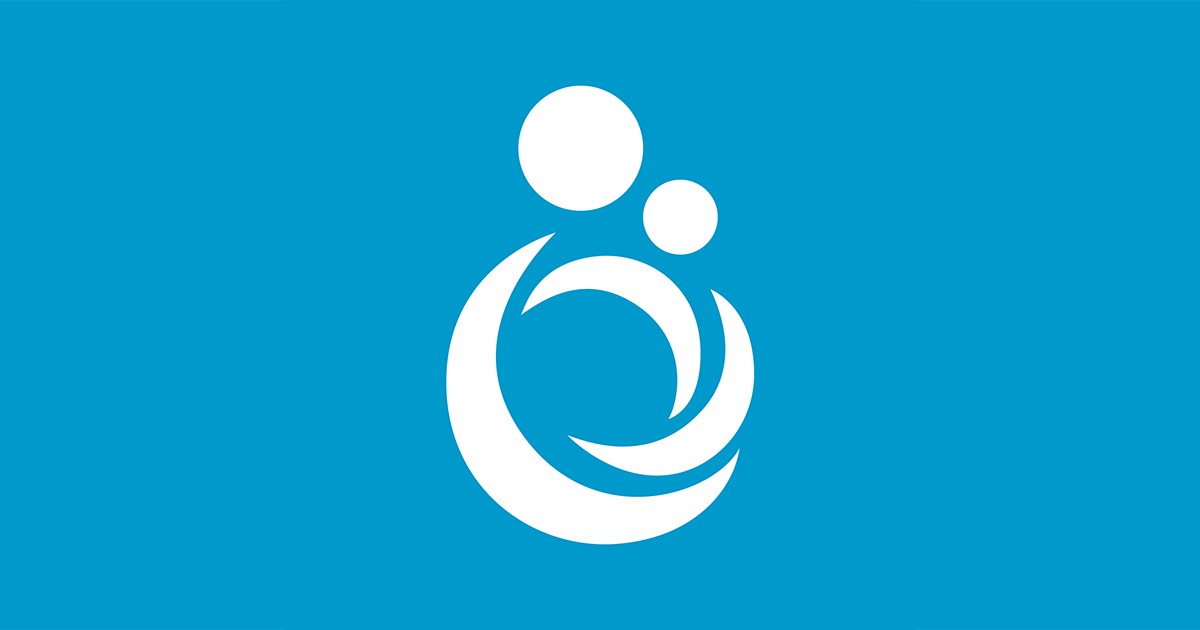 Good record keeping is an essential part of the special education process. Parents should save important records in an organized way to use for special education planning and to keep track of their child’s educational progress.
Good record keeping is an essential part of the special education process. Parents should save important records in an organized way to use for special education planning and to keep track of their child’s educational progress.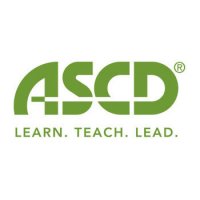 This is a professional organization site. Basic membership starts at $39.and features publications, conferences, professional learning and a small section on special education.
This is a professional organization site. Basic membership starts at $39.and features publications, conferences, professional learning and a small section on special education.  A legacy resource from NICHCY: supports, modifications and accommodations for students makes this statement the key to success in the classroom lies in having appropriate adaptations, accommodations, and modifications made to the instruction and other classroom activities.
A legacy resource from NICHCY: supports, modifications and accommodations for students makes this statement the key to success in the classroom lies in having appropriate adaptations, accommodations, and modifications made to the instruction and other classroom activities.
 Academic content Standards identify what Oregon students are expected to know and be able to do in the content areas.
Academic content Standards identify what Oregon students are expected to know and be able to do in the content areas. 



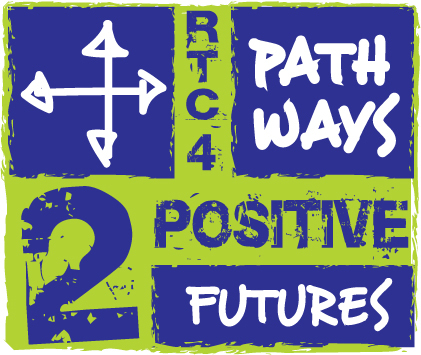 This booklet discusses "how to go through the career exploration process"
This booklet discusses "how to go through the career exploration process" YouthHood: This Web site was built to help you plan for the future. What will you do after high school? Will you work? Go to college? Live in a place of your own? By using this Web site, you can plan for your future right now!
YouthHood: This Web site was built to help you plan for the future. What will you do after high school? Will you work? Go to college? Live in a place of your own? By using this Web site, you can plan for your future right now! Swindell's Resource Center of Providence Child Center supports parents and caregivers of children who have special needs, developmental delays or disabilities. We provide resources, information and education to communities throughout Oregon and southwest Washington.
Swindell's Resource Center of Providence Child Center supports parents and caregivers of children who have special needs, developmental delays or disabilities. We provide resources, information and education to communities throughout Oregon and southwest Washington. The Arc Oregon, together with its network of members and affiliated chapters, advocates for the rights and full community participation of all children and adults with intellectual and developmental disabilities members of our community.
The Arc Oregon, together with its network of members and affiliated chapters, advocates for the rights and full community participation of all children and adults with intellectual and developmental disabilities members of our community. Home page for the Oregon Health Plan. This page includes information about the Oregon Health Plan and Quick links to health care resources.
Home page for the Oregon Health Plan. This page includes information about the Oregon Health Plan and Quick links to health care resources.  Data is one of the most powerful tools to inform, engage, and create opportunities for students along their education journey—and it‘s much more than test scores. Data helps us make connections that lead to insights and improvements. Everyone has an important role to play in helping all students succeed in their own individualized ways.
Data is one of the most powerful tools to inform, engage, and create opportunities for students along their education journey—and it‘s much more than test scores. Data helps us make connections that lead to insights and improvements. Everyone has an important role to play in helping all students succeed in their own individualized ways. Transition planning for students with IEPS: learn how this part of the IEP allows a teen in special education to outline goals that will help him/her achieve his/her post-high school plans
Transition planning for students with IEPS: learn how this part of the IEP allows a teen in special education to outline goals that will help him/her achieve his/her post-high school plans  The mission of the Transition Coalition at the University of Kansas is to maximize professional development in secondary school reform and transition. Transition Coalition site includes trainings, resources, products, presentations, assessment guide, and quality indicators.
The mission of the Transition Coalition at the University of Kansas is to maximize professional development in secondary school reform and transition. Transition Coalition site includes trainings, resources, products, presentations, assessment guide, and quality indicators. 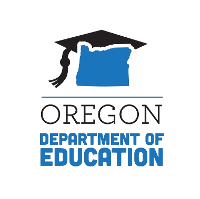
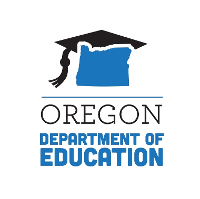
 The IDEA Partnership reflects the collaborative work of more than 50 national organizations, technical assistance providers, and organizations and agencies at state and local level.
The IDEA Partnership reflects the collaborative work of more than 50 national organizations, technical assistance providers, and organizations and agencies at state and local level. ISER is a directory of special education-related professionals, organizations and schools. We help parents find local special education professionals for learning disabilities and attention deficit disorder assessment, therapy, advocacy, critical teen issues and other special needs.
ISER is a directory of special education-related professionals, organizations and schools. We help parents find local special education professionals for learning disabilities and attention deficit disorder assessment, therapy, advocacy, critical teen issues and other special needs. AUCD's mission is to advance policies and practices that improve the health, education, social, and economic well-being of all people with developmental and other disabilities, their families, and their communities by supporting our members in research, education, health, and service activities that achieve our vision.
AUCD's mission is to advance policies and practices that improve the health, education, social, and economic well-being of all people with developmental and other disabilities, their families, and their communities by supporting our members in research, education, health, and service activities that achieve our vision. In a Dec. 29, 2015, order, the U.S. District Court for the District of Oregon approved a settlement agreement between the Justice Department, a class of private plaintiffs and the state of Oregon, which resolved the department’s and the class plaintiffs’ claims against the state under the Americans with Disabilities Act (ADA).
In a Dec. 29, 2015, order, the U.S. District Court for the District of Oregon approved a settlement agreement between the Justice Department, a class of private plaintiffs and the state of Oregon, which resolved the department’s and the class plaintiffs’ claims against the state under the Americans with Disabilities Act (ADA).
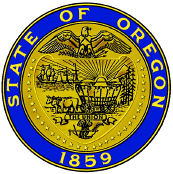
 All young adults who are deaf-blind need extensive transition planning and services in order to experience success in adult life. Transition Institutes have historically sought to bring together young adults and their families to build skills and provide training in the pursuit of better personal transition outcomes. The 2012 and 2015 Transition Institutes provided opportunities to capture interviews with youth, families, and service providers to share their perspectives on the experience of transition.
All young adults who are deaf-blind need extensive transition planning and services in order to experience success in adult life. Transition Institutes have historically sought to bring together young adults and their families to build skills and provide training in the pursuit of better personal transition outcomes. The 2012 and 2015 Transition Institutes provided opportunities to capture interviews with youth, families, and service providers to share their perspectives on the experience of transition.  FACT Oregon's Person-centered Planning page has templates for Person-centered Profile and sample Person-centered plans.
FACT Oregon's Person-centered Planning page has templates for Person-centered Profile and sample Person-centered plans.  Finding a job can be a challenge for youth. They must determine what careers are available, what their interests are, and what skills they have or need to develop. Numerous resources listed on this site are available to help youth get a sense of their interest and skills as well as gain employment experience and learn about employment opportunities.
Finding a job can be a challenge for youth. They must determine what careers are available, what their interests are, and what skills they have or need to develop. Numerous resources listed on this site are available to help youth get a sense of their interest and skills as well as gain employment experience and learn about employment opportunities. The TAGG is a new on-line transition assessment for secondary-aged youth with disabilities, their families, and professionals. TAGG items derive from research identified student behaviors associated with post high school employment and education. The TAGG provides a norm-based graphic profile, present level of performance statement, lists of strengths and needs, and suggested IEP annual transition goals.
The TAGG is a new on-line transition assessment for secondary-aged youth with disabilities, their families, and professionals. TAGG items derive from research identified student behaviors associated with post high school employment and education. The TAGG provides a norm-based graphic profile, present level of performance statement, lists of strengths and needs, and suggested IEP annual transition goals.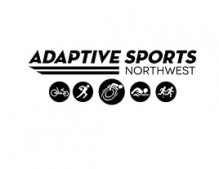
 Empowering Oregon families experiencing disability in their pursuit of a whole life by expanding awareness, growing community, and equipping families.
Empowering Oregon families experiencing disability in their pursuit of a whole life by expanding awareness, growing community, and equipping families.